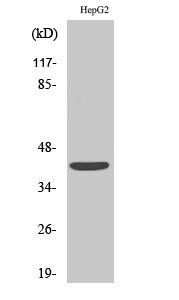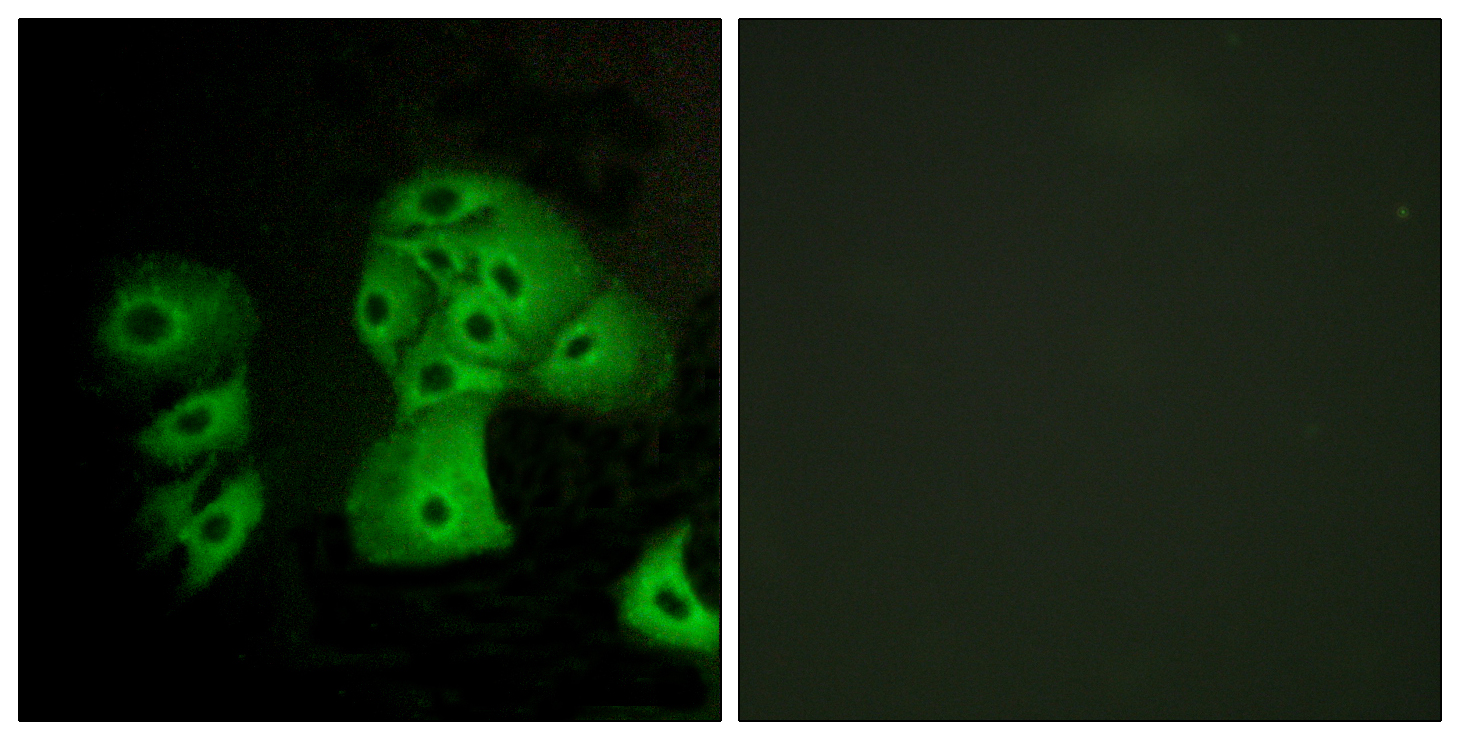EDG-6 Polyclonal Antibody
- Catalog No.:YT1468
- Applications:WB;IF;ELISA
- Reactivity:Human;Rat;Mouse;
- Target:
- EDG-6
- Fields:
- >>FoxO signaling pathway;>>Sphingolipid signaling pathway;>>Neuroactive ligand-receptor interaction
- Gene Name:
- S1PR4
- Protein Name:
- Sphingosine 1-phosphate receptor 4
- Human Gene Id:
- 8698
- Human Swiss Prot No:
- O95977
- Mouse Swiss Prot No:
- Q9Z0L1
- Immunogen:
- The antiserum was produced against synthesized peptide derived from human EDG6. AA range:211-260
- Specificity:
- EDG-6 Polyclonal Antibody detects endogenous levels of EDG-6 protein.
- Formulation:
- Liquid in PBS containing 50% glycerol, 0.5% BSA and 0.02% sodium azide.
- Source:
- Polyclonal, Rabbit,IgG
- Dilution:
- WB 1:500 - 1:2000. IF 1:200 - 1:1000. ELISA: 1:5000. Not yet tested in other applications.
- Purification:
- The antibody was affinity-purified from rabbit antiserum by affinity-chromatography using epitope-specific immunogen.
- Concentration:
- 1 mg/ml
- Storage Stability:
- -15°C to -25°C/1 year(Do not lower than -25°C)
- Other Name:
- S1PR4;EDG6;Sphingosine 1-phosphate receptor 4;S1P receptor 4;S1P4;Endothelial differentiation G-protein coupled receptor 6;Sphingosine 1-phosphate receptor Edg-6;S1P receptor Edg-6
- Observed Band(KD):
- 41kD
- Background:
- This gene is a member of the endothelial differentiation, G-protein-coupled (EDG)) receptor gene family. EDG receptors bind lysophospholipids or lysosphingolipids as ligands, and are involved in cell signalling in many different cell types. This EDG receptor gene is intronless and is specifically expressed in the lymphoid tissue. [provided by RefSeq, Jul 2008],
- Function:
- function:Receptor for the lysosphingolipid sphingosine 1-phosphate (S1P). S1P is a bioactive lysophospholipid that elicits diverse physiological effect on most types of cells and tissues. May be involved in cell migration processes that are specific for lymphocytes.,similarity:Belongs to the G-protein coupled receptor 1 family.,tissue specificity:Specifically expressed in fetal and adult lymphoid and hematopoietic tissue as well as in lung. Considerable level of expression in adult and fetal spleen as well as adult peripheral leukocytes and lung. Lower expression in adult thymus, lymph node, bone marrow, and appendix as well as in fetal liver, thymus, and lung.,
- Subcellular Location:
- Cell membrane; Multi-pass membrane protein.
- Expression:
- Specifically expressed in fetal and adult lymphoid and hematopoietic tissue as well as in lung. Considerable level of expression in adult and fetal spleen as well as adult peripheral leukocytes and lung. Lower expression in adult thymus, lymph node, bone marrow, and appendix as well as in fetal liver, thymus, and lung.
- June 19-2018
- WESTERN IMMUNOBLOTTING PROTOCOL
- June 19-2018
- IMMUNOHISTOCHEMISTRY-PARAFFIN PROTOCOL
- June 19-2018
- IMMUNOFLUORESCENCE PROTOCOL
- September 08-2020
- FLOW-CYTOMEYRT-PROTOCOL
- May 20-2022
- Cell-Based ELISA│解您多样本WB检测之困扰
- July 13-2018
- CELL-BASED-ELISA-PROTOCOL-FOR-ACETYL-PROTEIN
- July 13-2018
- CELL-BASED-ELISA-PROTOCOL-FOR-PHOSPHO-PROTEIN
- July 13-2018
- Antibody-FAQs
- Products Images

- Western Blot analysis of various cells using EDG-6 Polyclonal Antibody

- Immunofluorescence analysis of A549 cells, using EDG6 Antibody. The picture on the right is blocked with the synthesized peptide.



